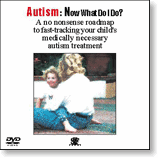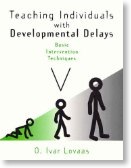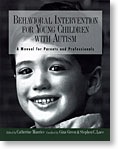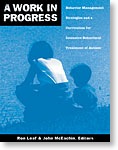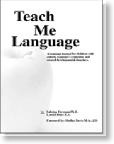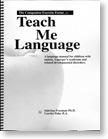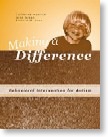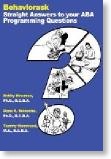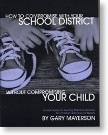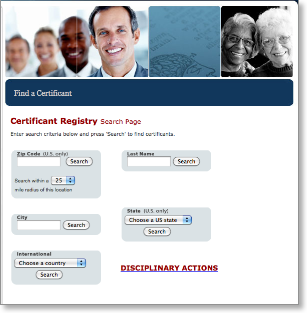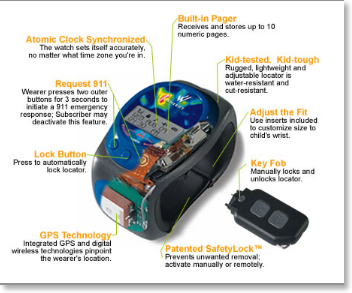Asperger's syndrome
Toilet Training
04/08/11 16:52
Autism Speaks is preparing a toilet-training information kit for parents of children with autism. This is a very good idea because toilet training is one of the first hurdles that a parent of a child with autism experiences either before, or soon after, the diagnosis. Many parents wonder if they will ever successfully toilet train their child. Unfortunately, in their autism toilet training article they refer to a study that found, “[children with autism] needed a year and a half of training, on average, to stay dry during the day and more than two years to become bowel trained.” (emphasis added).
A year and a half! No, that’s not a typo. Why would anyone hold up as a model to parents of children with autism a study where the researchers are manifestly incompetent and their intervention is functionally a failure? Why race to the bottom?
It is important for you to know that your child is either not toilet-trained because s/he doesn’t understand or have the skills yet OR s/he understands but does not want to change a behavior that is already comfortable. Either way, you will need to use the same technique to successfully toilet train .
There is no reason that your child cannot be toilet-trained; however, it may take different skills from the ones that you already possess. Luckily, there are a couple of resources that will help you along the way.
The best method available was pioneered by Nathin Azrin and Richard Foxx in 1971 (note: the academic terms for developmentally delayed people were different back then). They were originally working with developmentally disabled adults who were institutionalized, and these researchers were wildly successful. They also did research on typically developing children and wrote a best-seller that is still available today [Toilet Training in A Day]; however, their work on toilet-training children with developmental delays is much more useful for our purposes. Since their original research in the 1970s, behaviorists have moved the field forward through research and utilized some of the techniques first pioneered by Azrin and Foxx. Now there are practitioners in the field of Applied Behavior Analysis who can help you toilet train your child based on these techniques. You may be able to do this yourself; however, it can be difficult!
First, I recommend finding a Board Certified Behavior Analyst (BCBA) with expertise in autism to develop a program for your child; these professionals exist in every major city, in many small cities and towns in North America, & across the industrialized world.
In addition, there is a devise that you can purchase to help you in your toilet-training program called the Night Hawk. It is a high tech. wet alarm that works wirelessly and sends out an audible reminder. Although intended to be used at night, it can be used at all times to make your toilet training program more effective. The Night Hawk helps the child understand the connection between urination and running to the bathroom to get the alarm to stop. You may not have to use this device; however, if your child is getting ready to enter kindergarten and is still not toilet-trained, you might want to think about using this system since it can speed up the learning process considerably! This concept was first devised and tested in 1971, but not available on the market until decades later.
It is very important that a child with autism be toilet-trained prior to entering kindergarten because a non-toilet-trained child will generally be stigmatized. The goal is always to create a world where the child can participate as much as possible in the wonderful experiences that typically developing children are provided, and toilet-training is prerequisite to that.
With expertise and perseverance you will succeed. Importantly, the process should take two weeks or less, not a year and a half!
A year and a half! No, that’s not a typo. Why would anyone hold up as a model to parents of children with autism a study where the researchers are manifestly incompetent and their intervention is functionally a failure? Why race to the bottom?
It is important for you to know that your child is either not toilet-trained because s/he doesn’t understand or have the skills yet OR s/he understands but does not want to change a behavior that is already comfortable. Either way, you will need to use the same technique to successfully toilet train .
There is no reason that your child cannot be toilet-trained; however, it may take different skills from the ones that you already possess. Luckily, there are a couple of resources that will help you along the way.
The best method available was pioneered by Nathin Azrin and Richard Foxx in 1971 (note: the academic terms for developmentally delayed people were different back then). They were originally working with developmentally disabled adults who were institutionalized, and these researchers were wildly successful. They also did research on typically developing children and wrote a best-seller that is still available today [Toilet Training in A Day]; however, their work on toilet-training children with developmental delays is much more useful for our purposes. Since their original research in the 1970s, behaviorists have moved the field forward through research and utilized some of the techniques first pioneered by Azrin and Foxx. Now there are practitioners in the field of Applied Behavior Analysis who can help you toilet train your child based on these techniques. You may be able to do this yourself; however, it can be difficult!
First, I recommend finding a Board Certified Behavior Analyst (BCBA) with expertise in autism to develop a program for your child; these professionals exist in every major city, in many small cities and towns in North America, & across the industrialized world.
In addition, there is a devise that you can purchase to help you in your toilet-training program called the Night Hawk. It is a high tech. wet alarm that works wirelessly and sends out an audible reminder. Although intended to be used at night, it can be used at all times to make your toilet training program more effective. The Night Hawk helps the child understand the connection between urination and running to the bathroom to get the alarm to stop. You may not have to use this device; however, if your child is getting ready to enter kindergarten and is still not toilet-trained, you might want to think about using this system since it can speed up the learning process considerably! This concept was first devised and tested in 1971, but not available on the market until decades later.
It is very important that a child with autism be toilet-trained prior to entering kindergarten because a non-toilet-trained child will generally be stigmatized. The goal is always to create a world where the child can participate as much as possible in the wonderful experiences that typically developing children are provided, and toilet-training is prerequisite to that.
With expertise and perseverance you will succeed. Importantly, the process should take two weeks or less, not a year and a half!
Safety
03/08/11 11:45
I recently came across yet another news account about a child with autism that wandered off; luckily this child was found alive and safe! Seemingly every week we hear the same story, simply in a different location. Often there is a happy ending; however, too often the ending is tragic. It is happening so often that there is now a family web-site that remembers children with autism who were lost forever because they wandered away from home.
Make sure this doesn’t happen to your child. As a parent of a child with autism, you need to make life less stressful by setting up systems that ensure your child’s safety, without having to expend too much energy. Rest assured, there are active and passive ways to minimize your stress levels and maximize your child’s safety!
Passive protection:
• Alarm your home so that every time a window or door is opened, you can hear it through the warning beeps of the alarm system. This can be programmed to occur even when the system is not armed. The beeping allows you to monitor your child without necessarily having to see the child every moment. The minute you hear the beeping, then you can act (just make sure that you don’t run into your spouse since he will be doing the same thing!).
• For a relatively modest cost, a GPS child locator device like a Wherify watch (with monitoring) is a huge technological leap. This is a financial commitment but if your child is a wanderer or an escape artist, it is definitely worth your peace of mind.
• Teach your child how to swim. There is probably someone in your community who teaches swimming and understands how to efficiently teach your child to swim. The local pools and/or community centers are generally not the way to go. Ask around to find the person in your community with the reputation of being an effective swim teacher. Once your child is water safe, your worry about drowning disappears.
Active protection:
• Lobby your school district to erect fences around the school yard with locked gates (which would protect the typically developing children from malfeasance as well). The child would then need to leave through the front door, which is often near the front office, generally manned by an adult and further away from the playground.
• Inform your school that the child is a flight risk and that you hold them 100% accountable for your child’s safety.
• Make sure that your child is being supervised at all times by an adult, and not through the “buddy” system. The “buddy” system is bureaucratic speak for: “We don’t have enough staff, and the staff all want to eat at the same time. In order to make the staff happy, we have a child who is marginally older than your child, designated to take responsibility for the physical safety of your child. But, don’t worry, everything is under control... We’re professionals!” Please don’t countenance the buddy system for your child.
Once you take care of your child’s safety needs, your stress levels will diminish and the number of crises should decrease as well. Let’s make sure that the remembrance web-site for wandering children with autism does not grow by even one child.As a parent of a child with autism, you need to make your less stressful by setting up systems that ensure your child’s safety without you having to expend too much energy. There are active and passive ways to minimize your stress levels.
Make sure this doesn’t happen to your child. As a parent of a child with autism, you need to make life less stressful by setting up systems that ensure your child’s safety, without having to expend too much energy. Rest assured, there are active and passive ways to minimize your stress levels and maximize your child’s safety!
Passive protection:
• Alarm your home so that every time a window or door is opened, you can hear it through the warning beeps of the alarm system. This can be programmed to occur even when the system is not armed. The beeping allows you to monitor your child without necessarily having to see the child every moment. The minute you hear the beeping, then you can act (just make sure that you don’t run into your spouse since he will be doing the same thing!).
• For a relatively modest cost, a GPS child locator device like a Wherify watch (with monitoring) is a huge technological leap. This is a financial commitment but if your child is a wanderer or an escape artist, it is definitely worth your peace of mind.
• Teach your child how to swim. There is probably someone in your community who teaches swimming and understands how to efficiently teach your child to swim. The local pools and/or community centers are generally not the way to go. Ask around to find the person in your community with the reputation of being an effective swim teacher. Once your child is water safe, your worry about drowning disappears.
Active protection:
• Lobby your school district to erect fences around the school yard with locked gates (which would protect the typically developing children from malfeasance as well). The child would then need to leave through the front door, which is often near the front office, generally manned by an adult and further away from the playground.
• Inform your school that the child is a flight risk and that you hold them 100% accountable for your child’s safety.
• Make sure that your child is being supervised at all times by an adult, and not through the “buddy” system. The “buddy” system is bureaucratic speak for: “We don’t have enough staff, and the staff all want to eat at the same time. In order to make the staff happy, we have a child who is marginally older than your child, designated to take responsibility for the physical safety of your child. But, don’t worry, everything is under control... We’re professionals!” Please don’t countenance the buddy system for your child.
Once you take care of your child’s safety needs, your stress levels will diminish and the number of crises should decrease as well. Let’s make sure that the remembrance web-site for wandering children with autism does not grow by even one child.As a parent of a child with autism, you need to make your less stressful by setting up systems that ensure your child’s safety without you having to expend too much energy. There are active and passive ways to minimize your stress levels.
Autism and the Role of Music
31/07/11 19:23

If you have a child who appears to be musical, I would suggest that you teach him or her an instrument. The beauty of music is that it can be very reinforcing, repetitive and predictable. Our kids with autism can often outperform their typically developing peers if they have a modicum of talent.
How to teach music? It is simple if you use behavioral techniques. If your child is in an intensive behavioral treatment program, learning the instrument becomes another program. Here are some techniques that I’ve observed (these techniques are all rooted in the literature on ABA, but applied to music). I would suggest that for a child with autism, the easiest instrument with which to begin is piano primarily because it is easy to create a pleasing sound from the instrument. Piano is relatively easy to teach through imitation exercises. In addition, reading music can be taught in much the same way as one would teach a child with autism to learn the alphabet; in this case, the flash cards have notes (and time signatures etc.) on them instead of letters. Discrete trial training and discrimination training are significantly relied upon in the beginning. In addition, backwards chaining is a good way to teach piano pieces, since many children with autism are taught to finish in order to earn the reinforcement. I recently learned that many musicians teach typically developing children using a backward chaining technique as well.
The key to successfully teaching the child is finding a very open-minded piano teacher who is happy to work alongside an ABA therapist. Once the teacher gets over the fact that using abstract analogies does not work as a teaching tool for children with autism, the learning can begin! A flexible piano teacher will soon internalize the behavioral techniques applied to learning piano and the therapist will no longer need to attend lessons. At the beginning, the child may have difficulty following instructions. For example, a talented child with autism may have very firm ideas about how a given piece should end; however, the child will have to learn and accept that one must play the piece as it is written e.g., Bach’s Minuet in G Major must end on G below middle C, rather than an octave above because that’s how Bach wrote the piece! Over time, the structure of music will help the child excel and the ability to play one instrument may often be generalized to other instruments. In addition to personal enjoyment, music also creates a socially acceptable, group leisure activity. From playing an instrument, to playing and modifying music tracks on a computer using an attached piano keyboard, 'MIDI' interface and composition software, the potential for leisure activities is high. In addition, through music the child can participate in structured activities with other children including school bands and orchestras.
I’d like to suggest that working on an innate strength, as well as all the autism related deficits, is a very good idea. Music not only establishes the child’s competence amongst his or her peers, it also can provide much happiness to the child with autism. In the rare case where the child has perfect pitch, this ability may, additionally, have employment potential (in terms of musical transcription). Some thoughts about when to start: make sure the child has mastered simple imitation skills, is somewhat compliant and seems to enjoy music. In addition, some would argue that it is not a good idea to teach the child to read music until the child has mastered reading (decoding) his/her mother tongue.
Good luck on this project, and enjoy the music!
Employment
31/07/11 16:53
Once your child has graduated from high school, whether in the typical educational stream or in the special education stream, the next question you need to ask is: How is he or she going to make a living?
Some of you may be thinking: “Is this realistic?” Yes, it is. Whether your child has Asperger’s Syndrome and can be completely independent at work, or is very severely affected, this is a topic that is worth considering. Furthermore, for those children who have benefitted tremendously from early intervention, this is a topic that is going to become more relevant as more children graduate high school with many marketable skills.
There are many different jobs people with ASD can do. Moreover, there is dignity to completing a job and getting paid for it. At one end of the spectrum are people who can get a job on their own, but may need a temporary job coach to help them learn the social rules regarding the work place so that they don’t inadvertently alienate coworkers. Then there are others who need to be placed in a job, taken to the job-site, coached on how to do the job, but can do the work independently, once trained. Even people who are severely autistic can be taught to work at a job in a team e.g., delivering newspapers. I recently came across an article about a determined transition coordinator, Ms. Stanton-Paule, who is transitioning children with autism into paid employment. We need an army of people like this woman!
Working and getting paid for it is important because it further includes people with autism into the fabric of society. I think that they deserve that chance, and whether they are employed full-time, or part-time, they need to be able to define themselves to the world as having a job and having the perks that go along with the job e.g., money.
Recently, I came across Aspiritech, a Chicago startup that is hiring adults on the autism spectrum to work as software testers. That’s great news because there are many talented people with ASD who are very employable in the computer field.
Here are companies that hire people with an autism spectrum disorder.
Aspiritech hires people in the United States:

Autism Works hires people in the United Kingdom:

Specialisterne hires people in Iceland, Denmark and Scotland:

Passwerk hires people in Belguim:
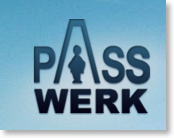
Laura Shumaker, wrote an interesting article on this topic. She lists a variety of non-profit organizations that work on the problem of employment for people with ASD, in addition to the organizations listed above. I think the solution is going to ultimately come from for profit companies that understand the benefit of hiring people on the autism spectrum. Not having to rely on government funding is preferable, since it is the profit motive that will keep these people working, not a benevolent bureaucrat.
Other possible employment ideas (across the range of capabilities for people on the spectrum) include the following:
• Computer Programming
• Graphic Design
• Musical Transcription
• Typing
• Book Cataloging (in libraries and used book stores)
• DVD/Video Cataloging in Video Stores
• Delivering Papers

These are jobs of which I am aware; however, I’m sure that there are many more not on this list. Please contact me if you have a lead so that we can broaden that list and provide more opportunities! Above is Elance, a Freelance website that has lots of opportunities available, depending upon skill set.
Some of you may be thinking: “Is this realistic?” Yes, it is. Whether your child has Asperger’s Syndrome and can be completely independent at work, or is very severely affected, this is a topic that is worth considering. Furthermore, for those children who have benefitted tremendously from early intervention, this is a topic that is going to become more relevant as more children graduate high school with many marketable skills.
There are many different jobs people with ASD can do. Moreover, there is dignity to completing a job and getting paid for it. At one end of the spectrum are people who can get a job on their own, but may need a temporary job coach to help them learn the social rules regarding the work place so that they don’t inadvertently alienate coworkers. Then there are others who need to be placed in a job, taken to the job-site, coached on how to do the job, but can do the work independently, once trained. Even people who are severely autistic can be taught to work at a job in a team e.g., delivering newspapers. I recently came across an article about a determined transition coordinator, Ms. Stanton-Paule, who is transitioning children with autism into paid employment. We need an army of people like this woman!
Working and getting paid for it is important because it further includes people with autism into the fabric of society. I think that they deserve that chance, and whether they are employed full-time, or part-time, they need to be able to define themselves to the world as having a job and having the perks that go along with the job e.g., money.
Recently, I came across Aspiritech, a Chicago startup that is hiring adults on the autism spectrum to work as software testers. That’s great news because there are many talented people with ASD who are very employable in the computer field.
Here are companies that hire people with an autism spectrum disorder.
Aspiritech hires people in the United States:

Autism Works hires people in the United Kingdom:

Specialisterne hires people in Iceland, Denmark and Scotland:

Passwerk hires people in Belguim:

Laura Shumaker, wrote an interesting article on this topic. She lists a variety of non-profit organizations that work on the problem of employment for people with ASD, in addition to the organizations listed above. I think the solution is going to ultimately come from for profit companies that understand the benefit of hiring people on the autism spectrum. Not having to rely on government funding is preferable, since it is the profit motive that will keep these people working, not a benevolent bureaucrat.
Other possible employment ideas (across the range of capabilities for people on the spectrum) include the following:
• Computer Programming
• Graphic Design
• Musical Transcription
• Typing
• Book Cataloging (in libraries and used book stores)
• DVD/Video Cataloging in Video Stores
• Delivering Papers

These are jobs of which I am aware; however, I’m sure that there are many more not on this list. Please contact me if you have a lead so that we can broaden that list and provide more opportunities! Above is Elance, a Freelance website that has lots of opportunities available, depending upon skill set.

